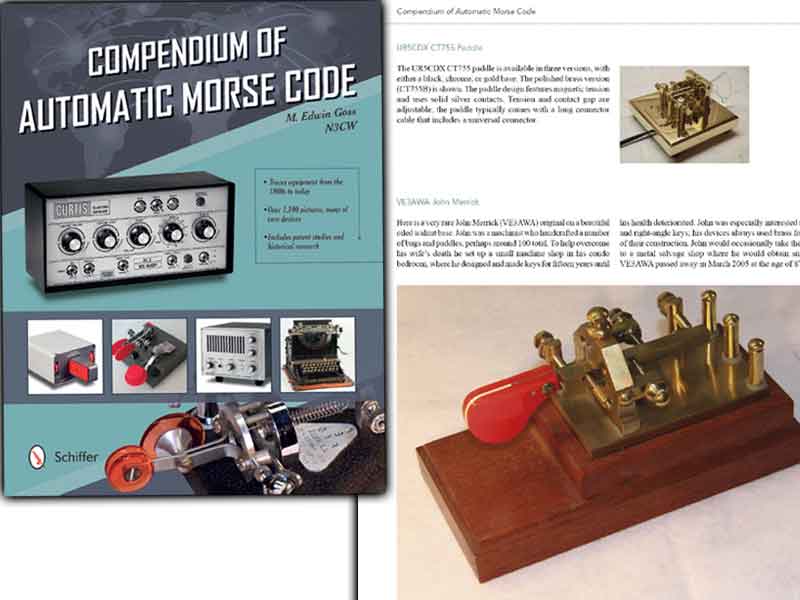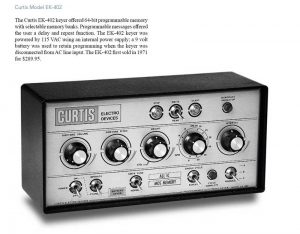
Monday, May 1, 2017 — Over the years I’ve owned and read various books about Morse code and keys, as well as articles on numerous websites and magazines — reading and writing about my favorite collectible is part of my hobby.
In 30 years as a licensed ham, I’ve never read a resource that is as detailed and complete about Morse devices as the new book by Ed Goss, N3CW, “Compendium of Automatic Morse Code.”

I’m not sure how long Ed spent working on his book, but from the simple heft of the book, its clear that Ed spent considerable time collecting and compiling information. I can’t say it enough — I’ve never seen such an in-depth collection of information about keys in my years as a ham.
The hardback book is divided into 15 chapters with three appendices, with more than 1,100 high-quality color photos all throughout the book. The book’s list price of $75 isn’t expensive once you consider what it costs for full color printing of a book on quality paper. This is a must-have reference book that everyone who enjoys Morse keys and their development in ham radio.
As many of you may know, I have a soft spot in my heart for homebrewed and handcrafted code keys. I was delighted to find how thoroughly Ed covered homebrew and home workshop-manufactured, low-volume keys. Some of these homebrew keys were later manufactured commercially, like Vibroplex’s Code Warrior Jr., which started out as Wayne Smith K8FF’s QRP key that won the 1997 Norcal key design contest and later offered as a kit by the Norcal QRP Club.
And speaking of the depth of Ed’s book — he even mentions (with a photo) a relatively unknown prototype K8FF dual-lever paddle that was one of three proof-of-concept prototypes. K8FF kept one of the keys; I wound up owning the other two copies.
I’m a history buff, and one of my interests has been the development of the electronic keying devices. Ed does a great job of highlighting some earlier developments in keying that pre-date the commonly accepted timeline.
As mentioned earlier in this review, the book’s list price is $75; don’t let this scare you off as it is worth every penny. The book is available at a discount at most online retailers. If you have a birthday or anniversary coming up, tell your family that this book would be a great gift idea for the hard-to-buy-for ham operator in their lives.
Available now on Amazon and other online retailers.
-30-
